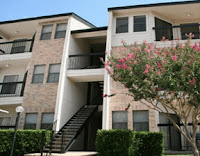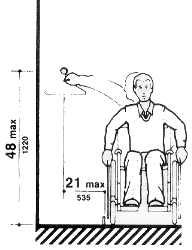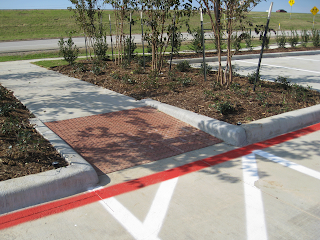Public Spaces
Wednesday, February 9th, 2011
One of my clients asked me yesterday why isn’t there just one accessibility standard rather than having so many to follow….If I knew the answer to that I could probably cause Peace on earth….
But alas, since there are so many all I can do is help you to figure out which standard to use when.
Remember that March 15, 2011 is when the new 2010 Standards will become effective and States will have to adopt them (or not) by March 15, 2012 when they will be mandatory.
ADA Standards
The ADA applies to facilities in the private sector (places of public accommodation and commercial facilities) and to state and local government facilities. Standards issued by the Department of Justice (DOJ) apply to all ADA facilities except transportation facilities, which are subject to standards maintained by the Department of Transportation (DOT). DOJ is in the process of adopting new ADA standards, and further information on this update is available on DOJ’s website . DOT has adopted new ADA standards which apply to bus stops, rail stations, and other transportation facilities.
For commercial facilities and places of public accommodations in the private sector use The 2010 Standards for Accessible Design with ADA scoping
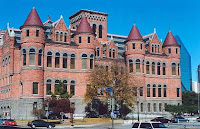
For State and Local Government Facilities (except transportation facilities) use the 2010 Standards for Accessible Design with Title II requirements, unless the municipality requires ANSI and therefore you will need to use both. Although the new Standards are almost identical to ANSI.
The ADA Standards for Transportation Facilities deal with Transportation Facilities
ABA Accessibility Standards
The ABA applies to federally funded facilities. The General Services Administration (GSA) updated its ABA standards, which apply to most facilities covered by the ABA. Similar standards have been adopted by the U.S. Postal Service (USPS) for postal facilities and by the Department of Defense for military facilities. The Department of Housing (HUD) is in the processing of updating its ABA standards, which apply to federally funded residential facilities.
For Federal Facilities (other than postal, housing, and military facilities) use the GSA’s AB Standards
For Postal Services facilities use the USPS ABA Accessibility Standards (also known as the RE-4 Standards)
For Military facilities use the Department of Defense ABA Accessibility Standards
Federally funding Housing use UFAS (but in the new standards this will be replaced by HUD’s standards)
State and Local Accessibility Standards
Even though the 2010 Standards is a Federal law, each State and local municipality is allowed to adopt this or any other accessibility standard also. The Access Board has a list of all the States and what Accessibility Standards they adopted
Note: A few friends on LinkedIn have sent me these corrections:
The Connecticut information listed is obsolete. The correct information is as follows:
Access Code- 2003 International Building Code Portion of the 2005 State Building Code of Connecticut- as amended on 2009 )
Washington State’s code listing on the Access Board site is obsolete as well. WA has adopted the 2006 IBC/2003 ANSI and will shift to 2009 IBC/2003 ANSI in late July.
Multi-Family housing
The Housing and Urban Development office of the Federal Government has developed the Fair Housing Act Section 504 that deals with the discrimination of people with disabilities as it pertains to their renting or owning an apartment or dwelling unit. There is a great handbook that they created that shows you graphically how to apply the Fair Housing Act Section 504
Public Rights of Way
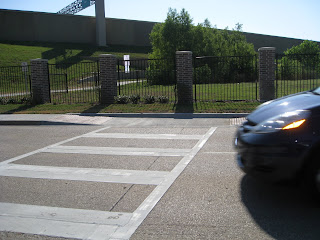
Sidewalks, street crossings, and other elements of the public rights-of-ways present unique challenges to accessibility for which specific guidance is considered essential. The Board is developing new guidelines for public rights-of-way that will address various issues, including access for blind pedestrians at street crossings, wheelchair access to on-street parking, and various constraints posed by space limitations, roadway design practices, slope, and terrain. The new guidelines will cover pedestrian access to sidewalks and streets, including crosswalks, curb ramps, street furnishings, pedestrian signals, parking, and other components of public rights-of-way. Here is the draft of those standards Public Rights-of-way
There are others that are covered by the guidelines like parks, outdoor recreation facilities, prisons and more. Check out the Access Board’s website and the ADA’s website for more information
Thursday, November 4th, 2010
When designing for accessibility, we immediately think of the wheelchair users and their needs. We design the parking, accessible route, ramps and eliminate the architectural barriers that impede the wheelchair access to the building or site. But the ADA involves more than mobility disabilities. The rules that people are not so aware of deal with the visually impaired community. The way we design for the blind and low vision patrons make it easier for way finding and getting around avoiding hazards along the way.
The new ADA keeps most of these rules intact, except for adopting a new numbering system in the guidelines. The new section for protruding objects will be found in Section 307 Protruding Objects
In the 2004 version of the ADAAG, the rules describe objects that protrude onto the circulation path of travel (not the accessible route). This path is different than an “accessible route”. The path of travel is for all pedestrians, regardless of disability. Along the circulation path, there should not be any protrusions that would cause a hazard to people who are visually impaired and wouldn’t normally see the protruding object. These requirements are now found in section 307 (formally 4.4)
Wall mounted and free standing objects that are mounted above 27″ cannot be detected by a person who uses a cane to find their way around. So any object that is mounted on the wall along the circulation path (remember this is a pedestrian route, not a wheel chair route) have to maintain a path free of obstructions
This photo shows a drinking fountain on the way to the restroom and higher than 27″ a.f.f. which would be a hazard to a blind person
A person who is visually impaired will not detect objects that are lower than 80″ from the ground. Objects along the circulation path, such as open stairs, sconces, even branches of a tree, should have some warning at a cane detectable height in front of it in order to warn the visually impaired person that a hazard may be up ahead
This open stair is a hazard since there is no way to detect the lower portion.
This graphic shows exterior elements that could become
hazards if they are not cane detectable.
The 2004 version of the ADAAG eliminates the detectable warnings at curb ramps. No longer will the truncated dome texture and contrasting color will be required within the property line. The Access Board and the Department of Transportation will be developing guidelines for curb ramps in the public right of way. We will keep you posted.
Detectable warnings are a controversial topic for architects but also for the disabled community. Visually impaired people really like detectable warning, like truncated domes, because it helps them with way finding. However architects and builders get frustrated with all their inconsistencies. Wheel chair users don’t enjoy the high maintenance that it requires at curb ramps. If the ramp ices over, it can gather dirt,and it is hard to wheel around it. So even though the detectable warnings at curb ramps were removed, the controversy in the disabled community has not gone away

This is an example of how a curb ramp can accumulate dirt and ice so that it can become a hazard more than a help
Monday, July 5th, 2010
|
Celebrating the 20th Anniversary of the Americans with Disabilities Act
|
|
Local architects, disability advocates and City officials are collaborating to celebrate the 20th anniversary of the Americans with Disabilities Act (ADA) civil rights law.
The Act was signed into law by George Bush on July 26, 1990. July 26. 2010 has been proclaimed by Mayor Tom Leppert as ADA Awareness day in the City of Dallas and ADA Celebration Day by Mayor Phil Dyer in the City of Plano .
HERO FRIEND
IN-KIND ORGANIZERS
   |
|
Proclamation Announcement with Kent Waldrep Keynote speaker
|
|
10:00 Dallas City Hall
Kent Waldrep will honor us with his participation as our Kick-off speaker to the ADA Awareness Day in Dallas. He will speak at the Dallas City Hall at 10:00 a.m. on July 26th 2010. His inspiring journey will give us an idea of how the ADA has benefited our country and the disabled community.
DARS will also be present to discuss what services they provide to the disabled community.
This event is open to the public.
|
|
|
|
|
12:00 at 4306 Capitol Avenue, Dallas, 75204
Founded in 1931, the Dallas Lighthouse for the Blind, a George Dahl architect designed historic building, focuses on improving and enhancing the lives and opportunities of the visually impaired in North Texas. Their guiding principle is the belief that with knowledge, training and motivation, people who are visually impaired can succeed and thrive in any workplace, live productive and meaningful lives, and be important contributors to their communities.
By providing jobs, job training and offering community services, the Lighthouse strives to empower and encourage its clients toward living independently.
The Lighthouse’s Industrial and Sewing Centers, where more than 150 people are employed, and the Technology Lab, which offers adaptive business skills training to provide enhanced upward mobility opportunities for employment in a variety of office environments, will be in full operation for this 30-minute guided tour. Find out how the Lighthouse is making a real difference in our community and how you can help. This tour is open to the general public, and reservations are not required, but a response to ensure your space on the tour would be appreciated.
For additional information, call Jo Baker at 214-821-2375, ext. 116.
|
|
Texas Discovery Gardens: A Case Study
|
|
6:00 p.m. At the Texas Discovery Gardens in Fair Park
Texas Discovery Gardens, a butterfly exhibit at Fair Park, was renovated by Oglesby Greene Architects. The original building is historic from the 1936 Centennial Exposition, as the House of Horticulture. What is now the Butterfly House was originally a conservatory. An addition was completed in 1971. The historic building was not originally accessible and with the remodel it was updated to meet the State and Federal requirements in a very sensitive and effective way. The tour will begin at 6:00 p.m. and will be led by the project architect and accessibility inspector.
This tour will be $10 for AIA and TRASA member and $20 for non-members and it is worth one hour of barrier free HSW CEU. RSVP to the AIA since there is a limited number of spots.
|
|
City of Plano Council Meeting and Proclamation Announcement
|
|
7:00 p.m. at the City of Plano Council Chamber
City of Plano joins communities across the country in recognizing the 20th anniversary of the signing of the Americans with Disabilities Act into legislation. The City is proclaiming July 26 as an annual ADA Celebration Day in the City of Plano. The Honorable Mayor Phil Dyer will present the proclamation during the regular city council meeting on Monday, July 26. Kent Waldrep will be a distinguished guest partaking in the proclamation event.
Plano Proclamation Presentation
Monday, July 26, 7 p.m.
Plano Municipal Center,
1520 K Avenue
Plano, Texas 75023
|
|
Sponsorship opportunities still available.
Our hope is to explore the effect of the act on the built environment as well as those whose lives have been enhanced by improved access to jobs, education, recreation, services and goods previously denied them by physical barriers or discrimination.
This is a day for awareness and for celebration of the elimination of architectural and cultural barriers in our society
|
|
|

Monday, June 21st, 2010
One of my clients asked me yesterday why isn’t there just one accessibility standard rather than having so many to follow….If I knew the answer to that I could probably cause Peace on earth….
But alas, since there are so many all I can do is help you to figure out which standard to use when.
ADA Standards
The ADA applies to facilities in the private sector (places of public accommodation and commercial facilities) and to state and local government facilities. Standards issued by the Department of Justice (DOJ) apply to all ADA facilities except transportation facilities, which are subject to standards maintained by the Department of Transportation (DOT). DOJ is in the process of adopting new ADA standards, and further information on this update is available on DOJ’s website . DOT has adopted new ADA standards which apply to bus stops, rail stations, and other transportation facilities.
For commercial facilities and places of public accommodations in the private sector use The ADAAG 1991 version
For State and Local Government Facilities (except transportation facilities) use the ADAAG 1991 version or The Uniform Federal Accessibility Standards (UFAS)
The ADA Standards for Transportation Facilities deal with Transportation Facilities
ABA Accessibility Standards
The ABA applies to federally funded facilities. The General Services Administration (GSA) updated its ABA standards, which apply to most facilities covered by the ABA. Similar standards have been adopted by the U.S. Postal Service (USPS) for postal facilities and by the Department of Defense for military facilities. The Department of Housing (HUD) is in the processing of updating its ABA standards, which apply to federally funded residential facilities.
For Federal Facilities (other than postal, housing, and military facilities) use the GSA’s AB Standards
For Postal Services facilities use the USPS ABA Accessibility Standards (also known as the RE-4 Standards)
For Military facilities use the Department of Defense ABA Accessibility Standards
Federally funding Housing use UFAS (but in the new standards this will be replaced by HUD’s standards)
State and Local Accessibility Standards
Even though the ADAAG is a Federal law, each State and local municipality is allowed to adopt this or any other accessibility standard also. The Access Board has a list of all the States and what Accessibility Standards they adopted
Note: A few friends on LinkedIn have sent me these corrections:
The Connecticut information listed is obsolete. The correct information is as follows:
Access Code- 2003 International Building Code Portion of the 2005 State Building Code of Connecticut- as amended on 2009 )
Washington State’s code listing on the Access Board site is obsolete as well. WA has adopted the 2006 IBC/2003 ANSI and will shift to 2009 IBC/2003 ANSI in late July.
Multi-Family housing
The Housing and Urban Development office of the Federal Government has developed the Fair Housing Act Section 504 that deals with the discrimination of people with disabilities as it pertains to their renting or owning an apartment or dwelling unit. There is a great handbook that they created that shows you graphically how to apply the Fair Housing Act Section 504
Public Rights of Way

Sidewalks, street crossings, and other elements of the public rights-of-ways present unique challenges to accessibility for which specific guidance is considered essential. The Board is developing new guidelines for public rights-of-way that will address various issues, including access for blind pedestrians at street crossings, wheelchair access to on-street parking, and various constraints posed by space limitations, roadway design practices, slope, and terrain. The new guidelines will cover pedestrian access to sidewalks and streets, including crosswalks, curb ramps, street furnishings, pedestrian signals, parking, and other components of public rights-of-way. Here is the draft of those standards Public Rights-of-way
There are others that are covered by the guidelines like parks, outdoor recreation facilities, prisons and more. Check out the Access Board’s website and the ADA’s website for more information
Sunday, June 20th, 2010
|
Celebrating the 20th Anniversary of the Americans with Disabilities Act
|
|
Local architects, disability advocates and City officials are collaborating to celebrate the 20th anniversary of the Americans with Disabilities Act (ADA) civil rights law.
The Act was signed into law by George Bush on July 26, 1990. July 26. 2010 has been proclaimed by Mayor Tom Leppert as ADA Awareness day in the City of Dallas and ADA Celebration Day by Mayor Phil Dyer in the City of Plano .
HERO FRIEND
IN-KIND ORGANIZERS
|
|
Proclamation Announcement with Kent Waldrep Keynote speaker
|
|
10:00 Dallas City Hall
Kent Waldrep will honor us with his participation as our Kick-off speaker to the ADA Awareness Day in Dallas. He will speak at the Dallas City Hall at 10:00 a.m. on July 26th 2010. His inspiring journey will give us an idea of how the ADA has benefited our country and the disabled community.
DARS will also be present to discuss what services they provide to the disabled community.
This event is open to the public.
|
|
|
|
|
12:00 at 4306 Capitol Avenue, Dallas, 75204
Founded in 1931, the Dallas Lighthouse for the Blind, a George Dahl architect designed historic building, focuses on improving and enhancing the lives and opportunities of the visually impaired in North Texas. Their guiding principle is the belief that with knowledge, training and motivation, people who are visually impaired can succeed and thrive in any workplace, live productive and meaningful lives, and be important contributors to their communities.
By providing jobs, job training and offering community services, the Lighthouse strives to empower and encourage its clients toward living independently.
The Lighthouse’s Industrial and Sewing Centers, where more than 150 people are employed, and the Technology Lab, which offers adaptive business skills training to provide enhanced upward mobility opportunities for employment in a variety of office environments, will be in full operation for this 30-minute guided tour. Find out how the Lighthouse is making a real difference in our community and how you can help. This tour is open to the general public, and reservations are not required, but a response to ensure your space on the tour would be appreciated.
For additional information, call Jo Baker at 214-821-2375, ext. 116.
|
|
Texas Discovery Gardens: A Case Study
|
|
6:00 p.m. At the Texas Discovery Gardens in Fair Park
Texas Discovery Gardens, a butterfly exhibit at Fair Park, was renovated by Oglesby Greene Architects. The original building is historic from the 1936 Centennial Exposition, as the House of Horticulture. What is now the Butterfly House was originally a conservatory. An addition was completed in 1971. The historic building was not originally accessible and with the remodel it was updated to meet the State and Federal requirements in a very sensitive and effective way. The tour will begin at 6:00 p.m. and will be led by the project architect and accessibility inspector.
This tour will be $10 for AIA and TRASA member and $20 for non-members and it is worth one hour of barrier free HSW CEU. RSVP to the AIA since there is a limited number of spots.
|
|
City of Plano Council Meeting and Proclamation Announcement
|
|
7:00 p.m. at the City of Plano Council Chamber
City of Plano joins communities across the country in recognizing the 20th anniversary of the signing of the Americans with Disabilities Act into legislation. The City is proclaiming July 26 as an annual ADA Celebration Day in the City of Plano. The Honorable Mayor Phil Dyer will present the proclamation during the regular city council meeting on Monday, July 26. Kent Waldrep will be a distinguished guest partaking in the proclamation event.
Plano Proclamation Presentation
Monday, July 26, 7 p.m.
Plano Municipal Center,
1520 K Avenue
Plano, Texas 75023
|
|
Sponsorship opportunities still available.
Our hope is to explore the effect of the act on the built environment as well as those whose lives have been enhanced by improved access to jobs, education, recreation, services and goods previously denied them by physical barriers or discrimination.
This is a day for awareness and for celebration of the elimination of architectural and cultural barriers in our society
|
|
|

Tuesday, May 4th, 2010
Commercial facilities are places where commerce takes place, such as retail stores. They are one of the two types of projects that are mentioned in Title III of the Americans with Disabilities Act as having to comply with the Design Guidelines. In the Guidelines, there isn’t one chapter which talks directly about commercial facilities, or retail spaces. You have to piece it together from various sections. This newsletter will discuss a clothing store to show which sections it must adhere to.
Clothes Rods
In storage closets that are used by the public and are not part of a work are, clothes rods are required to be provided within a reach range as shown in Figure 38 below.
But in a clothing store that has clothes rods throughout, this requirement does not apply…
4.1.3(12)(b) Shelves or display units allowing self-service by customers in mercantile occupancies shall be located on an accessible route complying with 4.3. Requirements for accessible reach range do not apply.
Dressing Rooms
Dressing rooms in the ADAAG are covered in section 4.35. Dressing rooms in retail stores are not only the place where dressing rooms are found, but here is the summary of the requirements of an accessible dressing room in a retail store per ADA 4.35.
1. An accessible dressing room with a sliding or swing door requires a 180 degree turning circle inside.
2. A dressing room requires a fixed bench.
3. The door cannot swing into the clear floor space of the dressing room.
4. And if a mirror is provided, then a full length mirror needs to be provided as well.
The dressing room shown in the picture, does not meet any of the requirements. The door swings in, there is no 180 degree turning space and no fixed bench. But if they changed the door to a curtain, then the requirement for turning does not apply.
“…Turning space shall not be required in a private dressing room entered through a curtained opening at least 32 in (815mm) wide if clear floor space complying with section 4.2 renders the dressing room usable by a person using a wheelchair.”
All the other provisions (i.e. bench, mirrors, etc.) are still required even if you don’t have a door.
Check out counters/registers
Section 7 Business and Mercantile discusses sales counters. Department stores and retail stores have requirements for their counters that have a cash register used for sales. At least one of each type of counter shall have a counter 36″ long, at 36″ high a.f.f. Depth is not specified, but in Texas they recommend 12″ minimum. These should be dispersed and be on an accessible route.
There are some instances when an “equivalent Facilitation” may be allowed if it proves to be an equal or better accessible solution. Some examples would be folding check writing counters, or sliding counters which allow for the main counter to be higher and the accessible surface temporaily put away until required.
Saturday, March 6th, 2010
According to the March/April 2005 National Fire Protection Association Journal, “Roughly 20% of the U.S. population is disabled, including those who have mobility impairments, who are deaf or hard of hearing, who are blind or partially sighted, people of size, the elderly, those who have cognitive or emotional impairments and those who are vertically challenged.” As a result, it is of the highest importance that measures be taken to ensure their safety in the event of an emergency. This includes providing adequate refuge space and means of communication, where required, alternative means and routes of evacuation other than elevators and clearly illustrating available accessible evacuation routes on emergency evacuation plans. In addition to this, it is critical that building staff be trained in general evacuation procedures. The American Disabilities Act (ADA), signed in 1990, requires that that all newly constructed buildings be accessible to people with disabilities.
Chapter 3 defines Egress as:
3.5.26 Means of Egress. A continuous and unobstructed way of exit travel from any point in a building or facility to a public way.
This photo shows an accessible route striped with a curb ramp leading to the public sidewalk.
This part of the definition is always a point of contention. How far does one consider the “public way”? The Texas Department of Licensing and Regulation, requires that the means of egress be taken to a public sidewalk. In the absence of a public sidewalk, they defer to requirements from the fire Marshall.
Means of Egress in New Construction
4.1.3 in the ADAAG and in the Texas Accessibility Standards we find the requirements for new construction.
TAS and ADA 4.1.3 (9) states:
“In buildings or facilities, or portions of buildings or facilities, required to be accessible, accessible means of egress shall be provided in the same number as required for exits by local building/life safety regulations….”
For example, if the building code requires two means of egress and two are provided, then both those exits must be on an accessible route. On the other hand, if a building code only requires two means of egress but four are provided, only two must be accessible.
Means of Egress at Alterations
It is exempted….
Believe it or not, in an existing facility where renovations are being made to a primary area, the means of egress does not have to be brought up to compliance with the accessibility standards if it is not accessible.
TAS 4.1.6 (1) (g) states:
“In alterations, the requirements of 4.1.3(9), 4.3.10 and 4.3.11 do not apply.”
4.1.3(9) speaks about the means of egress requirements stated above. 4.3.10 discusses egress and 4.3.11 discusses areas of rescue assistance. These sections will not apply in an alteration.
The picture above shows an existing building that was renovated, and this was one of their required exits. Since the exit was existing, it will not be required to be brought up to compliance.
Friday, February 12th, 2010
My colleague Ken Otten from my professional organization TRASA just sent an email that explains where the space that a wheel chair requires to transfer onto the bench provided must be located.
The Access Board put out a publication in 2002 about locker rooms/dressing rooms and here is what it says:
Dressing, Fitting, or Locker Rooms
- If they are in a cluster, 5 percent, or at least one must be accessible.
- There must be an accessible route through the door and to all elements required to be accessible in the room.
- Operating mechanisms provided on accessible lockers must also meet ADAAG provisions for their operation and height.
These rules also apply to dressing rooms in retail shops
Lockers
If lockers are provided, at least 5 percent, but not less than one of each type (full, half, quarter, etc.) must be accessible. Accessible benches should be located adjacent to the accessible lockers.
Notice that the figure shows the clear floor space (CFS or the wheel chair space) perpendicular to the bench and the wall where the long side is located. The 30X48 CFS is to be located along the short side of the bench, not in front of it, and positioned so that a person in a wheelchair can transfer directly onto one end of the bench. Even though this only shows the bench next to the lockers, it also applies to dressing room benches that are inside a retail shop.
 Abadi
Abadi 





